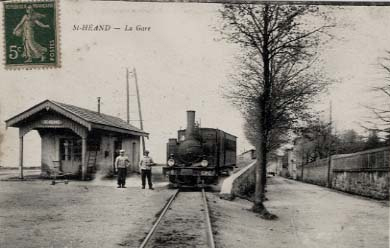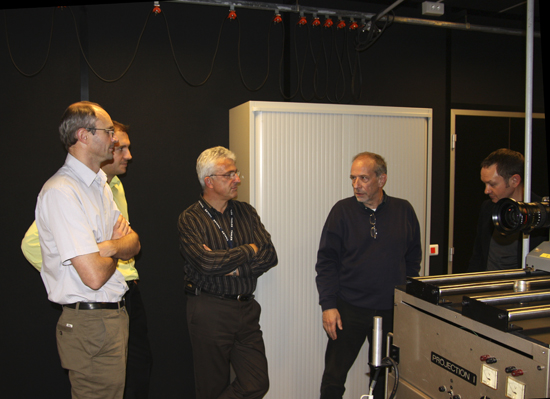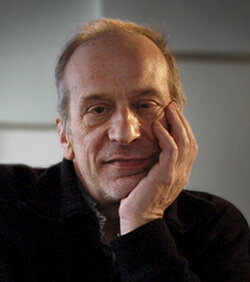Angénieux, an ingenious balance between craft and industry
by Renato BertaI met Philippe Parain during the presentation of the new Fuji film, on the 24th of September last year.
In discussing the quality of the Angénieux zooms, I told him of my "doubts" about the historical flaws, particularly distortions.
On Thursday, November 26, after giving a presentation at the Architectural School of Saint-Etienne, I took advantage of the proximity of St. Héand, and visited Angénieux.

I was greeted by Edith Bertrand, communications manager and Dominique Rouchon-Picariello, director of civilian marketing, who gave me a history of the company.
One of the specialities at Angénieux is combining design and production in one place.
The traditional knowledge and craftsmanshp of Angénieux involves glass cutting, polishing, anti-reflective coating for lenses, and mechanics using special machines on the one hand, and the assembly of zooms on the other — the 24-290 mm requires about 2 working weeks, including phases of adjustment with different tests and the marking of distances and apertures. Angénieux is a jewel in our era of anonymous, financial hyper-industrialization.
The presence of founder Pierre Angénieux still imbues the plant, and you can still see the familial and craftsmanship side of the business.
I think that Thales has been able to find an ingenious balance between industry and handicraft, certainly no easy feat to organize and manage.

I met technicians with whom I had a dialogue about the latest "small ones" out of the factory : the 15-40 and 28-76 mm zooms.
Obviously we tested the performance of these lenses on an optical bench.
I can tell it this way :
- Resolution : equal to a prime lens (with a projected test pattern)
- Focal length : 28 mm, could we have a few millimeters less ?
- Aperture : T2.6, could we have two thirds of a stop more ?
- Density in relation to focal lengths : very good.
- Light spread : much improved, a few questions remain.
- Focus : very good throughout zoom, and especially no more "breathing"
- Mechanics : very good fluidity.
- Dimensions - weight : reducing the focal lengths a few mm towards a wider angle, and increasing the aperture by 2 / 3 of a stop would make the weight too heavy.
I realize that it is difficult to establish a direct and simple relationship of performance vs. weight, given the complexity of calculations.
I must confess that I was amazed by the quality of both of these lenses and I am forced to revise my opinions based on previous generations of zooms.
But the thing I consider most important is the availability of the designers, their curiosity and their openness to dialogue.
In terms of the future, we discussed the fact that mounting a lens on a camera is a gesture from the past. Instead we should consider how to mount a camera on a lens, with all the ensuing ergonomic issues...
There still remain some subjective assessments.
The next step would be to test these lenses under shooting conditions at St. Héand, in order to keep this precious dialogue going for the benefit of all.
Translated from French by Benjamin B
 En
En Fr
Fr




